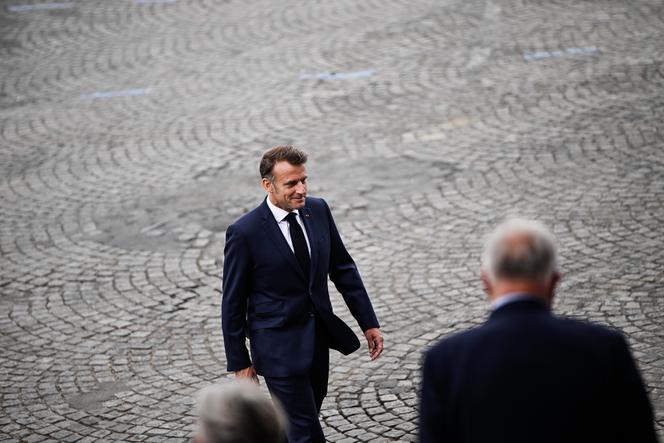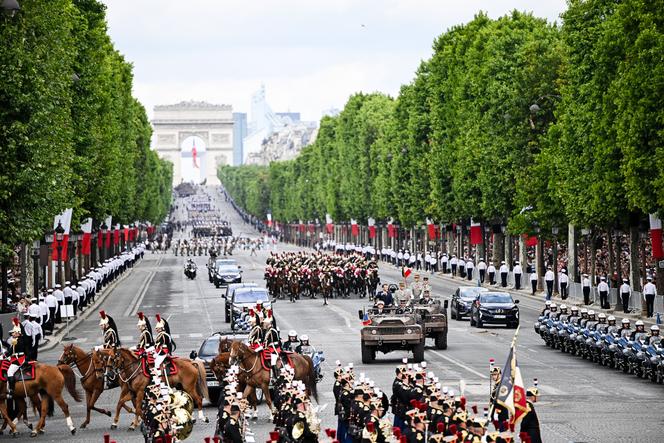


French President Emmanuel Macron marched down the Champs-Elysées on Monday, July 14, before the start of the traditional Bastille Day parade. At the foot of the Arc de Triomphe, the head of state had previously presented the president of the Flame Committee, on the occasion of its centenary, with a sword used to rekindle the flame every evening. Cornflowers were then laid on the tomb of the Unknown Soldier, representing French soldiers who fell in battle.
Organized as a "real military operation," according to the military governor of Paris, General Loïc Mizon, this year's parade reflected the seriousness of the threats to the continent's security. Following Macron's announcement on Sunday, in his speech to the armed forces, of a further increase in the defense budget to meet the threats of a "more brutal world," the Bastille Day parade showcased French servicemen and women "ready to go" on operations. The French army intended to highlight its "operational credibility" and "strategic solidarity" with its partners.
In 2024, due to the Olympic and Paralympic Games in Paris, the parade was moved to Avenue Hoche. Now back on the Champs-Elysées, this year's parade featured units from the 7th Armored Brigade. According to Mizon, "the goal [was] to show a combat force that is almost ready to depart, just as it is presented to our fellow citizens on the Champs-Elysées."
Paris aims to have the ability to deploy, if necessary, a "war-ready" brigade – over 7,000 personnel with full munitions and logistics – within 10 days. By 2027, the goal is to be able to do the same with a division (over 20,000 personnel) within 30 days.

To represent France's partnerships, the parade included a joint Belgian-Luxembourg company, the Franco-Finnish binational force that forms the rapid reaction unit of the United Nations Interim Force in Lebanon (FINUL), and the crew of the frigate Auvergne, which has carried out several deployments in the Baltic and Arctic Seas in support of North Atlantic Treaty Organization (NATO) operations.
This year, the parade put Indonesia in the spotlight, as France has concluded a strategic partnership with the country to strengthen its role in the Indo-Pacific. Indonesian President Prabowo Subianto – who hosted Macron in Jakarta at the end of May – attended the festivities alongside his French counterpart. Subianto has announced his intention to acquire more Rafale fighter jets, Scorpène submarines, Caesar artillery systems and light frigates.
Preceded by the Patrouille de France air show, more than 450 Indonesian service members, including musicians from a drum band, wearing pilot helmets, lion heads or shark heads depending on their corps, opened the parade on foot. In total, 7,000 men and women took part in the parade, including 5,600 on foot, 65 aircraft (five of which were foreign), 34 helicopters, 247 vehicles and 200 horses from the Garde Républicaine.
Translation of an original article published in French on lemonde.fr; the publisher may only be liable for the French version.
